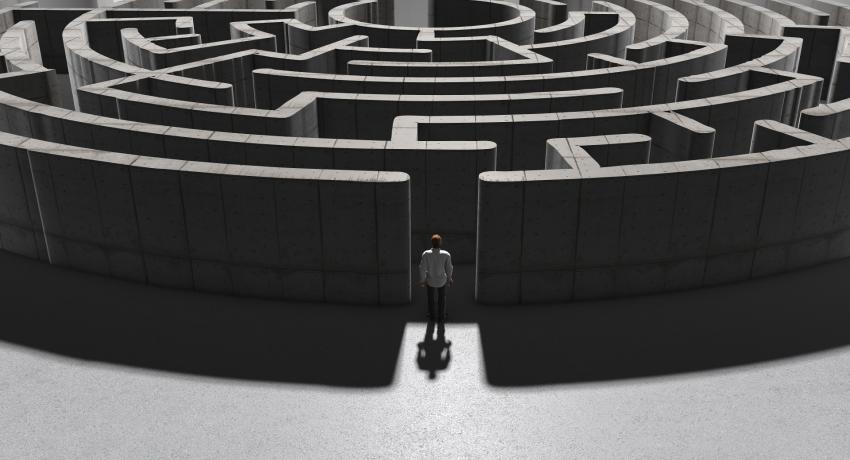Anxiety is the experience of a nervous system that is not running smoothly. Many things cause anxiety including stress and trauma. Here are several simple somatic practices to soothe the nervous system. Each gently invites awareness back into the body and can create experiences of safety and calm. You can develop these resources at home, or anywhere you have a moment, and then practice tapping back into them during stressful experiences. This practice—developing and accessing your resources—can play a central role in systematically decreasing anxiety. As with any somatic practice, pay attention if it doesn't feel good, and stop if you become uncomfortable or your anxiety increases.
Get grounded. Feel your feet. Stand up and bounce a little bit. Notice if it feels like the ground is reaching up to you, or if you are reaching down to the ground. If you have a tennis ball, take off your shoes and roll the ball under each foot. Imagine that you are exploring your foot as if for the first time. Spend extra time gently pressing into tight or tender parts. After you’ve done one foot, notice if you feel a difference between the two sides. When you are done with both feet, notice again if the ground is reaching up to meet you, or if you are reaching down to the ground. If you don’t have a tennis ball, you can also move your feet on the ground, massage them, or wiggle and stretch your toes.
Practice reconnecting with this sense of grounding during stressful moments by simply bringing awareness to your feet. Push them into the ground and spread your toes in your shoes. See if you can recall the experience of rolling out or massaging your feet. Notice if bringing that experience to mind helps to recreate it in the present moment.
Extend your exhale. Take a moment to notice your breath, without trying to change anything. Be curious about how your breath is naturally moving. Take a breath in, counting to measure the length of the inhale. When you breathe out, try to extend the exhale for a count or two longer than the inhale. Do this a few times, and then let go of the counting. Notice again how your breath is moving, and if there’s been any change. Extending the exhale brings your parasympathetic nervous system—the part of your nervous system that’s engaged when you feel relaxed and calm—back on board. You can do this exercise before, during or after a stressful event. Versatile breath!
Feel your skin. It may sound a bit odd, but it can be helpful to remember that you have skin. It is your primary boundary, the thing that holds you together and that interacts with the world. Connecting with your skin can strengthen a sense of containment—a nice counterpoint to anxious experiences of feeling out of control or out of your body. Begin by touching any exposed skin—hands, arms, neck ankles and so on. Next, notice how your clothing feels against your body. Now move your hands over the rest of your body. Try gentle squeezes, rubbing or patting—different bodies like different things. Don’t forget to connect with your back body, your face and the top of your head. Try shifting your attention between the feeling of touching (what do your hands notice?) and the feeling of being touched (how does your body respond to the touch of your hands?). During stressful experiences you can reconnect with that touch, or simply bring your awareness to the fact of your skin boundary.
Engage your large muscles. Sit in a chair with your legs uncrossed, feet on the ground. Check in with your experience, paying attention to how “in” your body you feel. Do you notice where you’re touching the chair? Do you feel more "up in your head?" Now, push your feet into the ground and notice any difference. Next, bring your hands to the outside of your thighs. Push your hands in as you push your thighs out. Again, track any shifts in your energy or experience. Finally, bring your hands to the inside of your thighs, just above your knees. Push your hands out as you push your legs in. Once again, track any shifts. Engaging your large muscles can help shift your focus and energy down, slowing and quieting racing thoughts.
These exercises—especially the first two steps—can be done during stressful situations, any time you are feeling somewhat out of your body.
- Log in to post comments

